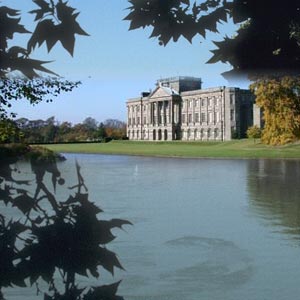The Lyme Hall is a sixteenth century Tudor hall in Manchester on the edge of the Pennines. It rests above the Manchester and Cheshire plains. It was a Tudor hall until the Venetian architect Giacomo Leoni transformed it in the 1720s. The rooms of the house are ornately decorated with ceiling painting by Leoni and Mortlake tapestries. You can also find a huge collection of clocks in Lyme Hall. However some of the Elizabethan interiors still remain as a contrast to Leoni?s work.
The Lyme hall is a mixture of different interior styles. It was house to the Legh family who lived here for 600 years. The hall also has a library where you can see 3 ancient Greek tombstones brought by archealogist Thomas Legh during the nineteenth century. Lyme Hall in Manchester is set in a large park famous for its red deer. The park lies on the beds of a lake and is surrounded by a grand Victorian garden -- an impressive Edwardian rose garden, Jekyll-style herbaceous borders and a ravine garden. The Lyme Park in Manchester also houses a conservatory designed by James Wyatt.
The gardens are designed in Dutch style and are also referred to as Dutch garden after its earlier form. The Orangery designed by Wyatt has some of the plants from the times of the first Lord Newton and his initials can be seen on the floor. The garden is surrounded by a medieval deer park that occupies almost 1400 acres of moorland, woodland and parkland. The grounds contain an early eighteenth-century hunting tower, the Lyme cage.
The Lyme Park and the hall is beautifully placed below the Pennine hills which offers visitors a splendid view of the Cheshire Plain, the whole of Greater Manchester and the foothills of Snowdonia. Lyme Park in Manchester has appeared as ?Pemberley? in the BBC?s adaptation of Jane Austen?s novel Pride and Prejudice.













